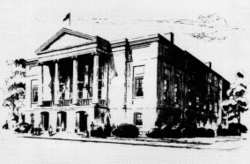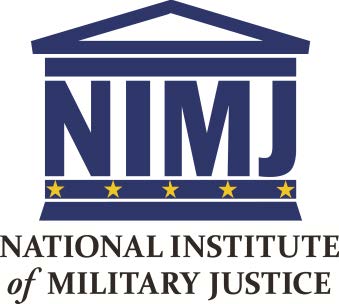The agent's testimony, however, was based solely on the extrajudicial statements of the petitioner, and under the standard we have adopted these admissions must be corroborated by substantial independent evidence. Smith v. United States, 348 U.S. 147, 157 (1954) (emphasis added). The CAAF has granted Appellant Whiteeyes petition for review on the following issue. WHETHER THE MILITARY JUDGE COMMITTED PREJUDICIAL ERROR BY ADMITTING APPELLANT'S STATEMENTS TO LAW ENFORCEMENT IN VIOLATION OF MILITARY RULE OF EVIDENCE 304(c). The ACCA decision is here. The appellant's Reply to the government's Answer to the opening brief is here, but neither the opening brief nor the Answer are on the ACCA site. An enlisted panel found the appellant guilty of one specification of sexual abuse of a child but not guilty of one specification of raping a child and one specification of sexually abusing a child. On appeal to ACCA, the appellant raised several issues; among them a challenge to various pretrial admissions because there was insufficient independent evidence tending to establish the “trustworthiness of the admission or confession.” A murder must be proven by evidence outside of the confession of the defendant;" and that "whenever that state of case is established, then you may take the declarations of the defendant as tending to show his guilt." Issacs v. United States, 159 U.S. 487, 490 (1895) (emphasis in the original). But what quantum of evidence does the Supreme Court require? Opper is most frequently cited for the quantum of evidence required to corroborate a confession--yet nowhere in that decision does the court say that "slight" or "very slight" corroboration is all that is needed. CAAF has itself said, In Opper v. United States, 348 U.S. 84 (1954), and Smith v. United States, 348 U.S. 147 (1954), the Supreme Court held that corroboration was needed to establish the truthfulness or trustworthiness of a confession before it could be used as evidence. According to the Supreme Court: United States v. Melvin, 26 M.J. 145, 146 (C.M.A. 1988). (emphasis added). We are concerned about the reliability of admissions and confessions because of suspect police interrogation methods. reliability may be suspect if it is extracted from one who is under the pressure of a police investigation -- whose words may reflect the strain and confusion attending his predicament rather than a clear reflection of his past. Finally, the experience of the courts, the police and the medical profession recounts a number of false confessions voluntarily made, Smith, 348 U.S. at 152-53. In our country the doubt persists that the zeal of the agencies of prosecution to protect the peace, the self-interest of the accomplice, the maliciousness of an enemy or the aberration or weakness of the accused under the strain of suspicion may tinge or warp the facts of the confession. Opper, 348 U.S. at 89-90. To address the concerns about the reliability of admissions and confessions the Supreme Court decided, [W]e think the better rule to be that the corroborative evidence need not be sufficient, independent of the statements, to establish the corpus delicti. It is necessary, therefore, to require the Government to introduce substantial independent evidence which would tend to establish the trustworthiness of the statement. Opper v. United States, 348 U.S. 84, 93-94 (1954) (emphasis added). Does Opper anywhere suggest that the quantum of evidence need only be slight or very slight? Certainly there is no requirement of proof beyond reasonable doubt. And United States v. Taylor, 802 F.2d 1108, 1117 (9th Cir. 1986) suggests the corroborating evidence need not be overwhelming. What does Mil. R. Evid. 304(c) say? An admission or a confession of the accused may be considered as evidence against the accused on the question of guilt or innocence only if independent evidence, either direct or circumstantial, has been admitted into evidence that would tend to establish the trustworthiness of the admission or confession. Nope, nothing there about slight or very slight. ACCA in Whiteeyes has this to say about corroboration. Our superior court has recently reiterated that under Mil. R. Evid. 304(c)(4), the quantum of independent corroborating evidence, which can be either direct or circumstantial, need only be "slight." [United States v.] Jones, 78 M.J. [37,] 42 [(C.A.A.F. 2018)] (quoting United States v. Adams, 74 M.J. 137, 140 (C.A.A.F. 2015)). As a panel of this court explained:
Slip op., at 6-7 (emphasis added). Finding a "very slight quantum of corroborating evidence," the ACCA found no abuse of discretion by the MJ--the court relies on Jones, Melvin, Adams, and Arnold, among other cases. In Jones, Judge Maggs tells us they have traditionally "described the quantum of evidence as being "slight,""--not very slight. 78 M.J. at 42, citing to Adams. And in Adams we are told, While in Opper the Supreme Court held that it "is necessary . . . to require the Government to introduce substantial independent evidence which would tend to establish the trustworthiness of the statement," 348 U.S. at 93, the "substantial" corroboration language was not incorporated into M.R.E. 304(c). Instead, M.R.E. 304(c) requires an amount of independent evidence sufficient to justify an inference of truth of the essential facts admitted from the confession. While we have previously noted that a sufficient amount of evidence can be slight, the evidence must nevertheless be sufficient in quantity and quality to meet the plain language of the rule. Adams, 74 M.J. at 140. Is the language of the Rule that plain? Arnold circles back to Melvin. Writing for a majority in Melvin, Judge Sullivan reflects on Opper, Smith, and various cases to hold that "the same rule of corroboration also exists in the military." 26 M.J. at 147 (citing to United States v. Yates, 24 M.J. 114 (C.M.A. 1987), certiorari denied 484 U.S. 852 (1987). Yates does not say what specific "quantum" of corroboration evidence is required but Opper and Smith require substantial. Is it time for CAAF to revisit the inadequately low quantum of very slight evidence--a smidgen above speculation? United States v. Forte, 94 F.2d 236, 237-38 (D.C. Cir. 1937), affirmed on other grounds, 302 U.S. 220, 58 S.Ct. 180, 82 L.Ed. 209 (1937) was relied on in Ercoli v. United States. The United States and the appellant agreed and the court accepted Forte as applicable on the following points. (1) there can be no conviction of an accused person in a criminal case upon an uncorroborated extrajudicial confession; (2) such corroboration is not sufficient if it tends merely to support the confession without also embracing substantial evidence touching and tending to prove each of the main elements or constituent parts of the corpus delicti; (3) however, such corroborating evidence need not, independent of the confession, establish the corpus delicti beyond a reasonable doubt; (4) if there is substantial evidence of the corpus delicti, independent of the confession, and the two, together, are convincing beyond a reasonable doubt of a defendant's guilt, that is sufficient. Ercoli v. United States, 76 U.S. App. D.C. 360, 131 F.2d 354, 356-57 (1942) (emphasis added). In Forte, the court observed that false confessions are rare. 94 F.2d at 237-38. Can we really say that in 2021 based on the research into false confessions and the evidence that false confessions have contributed to convictions that false confessions are rare. If nothing else the Innocence Project and similar and robust research teaches heightened concern. It is now rare to see confessions physically beaten out of people. Rather, interrogators rely on psychology, lying, misleading, and obfuscating, to obtain admissions and confessions, which, in my opinion are more likely to produce ambiguous and at times false confessions which are harder to rebut. Other countries are adapting to changing techniques toward those considered more reliable, more complete, and more sustainable to challenge. See, e.g., Investigative Interviewing. College of Policing (UK); Walsh & Bull, What really is effective in interviews with suspects" A study comparing interviewing skills against interview outcomes. 15 Legal & Criminological Psych 305. British Psychological Society, 2010.) The PEACE technique works better than the Reid Technique. Chief Judge Baker dissenting in Adams observes that, This Court is riding a pendulum back and forth when it comes to the law on corroborating confessions. In eleven years, we have moved from one extreme in United States v. Seay, 60 M.J. 73 (C.A.A.F. 2004), to the other extreme in United States v. Adams, 74 M.J. 137 (C.A.A.F. 2015). In Seay, the Court found the appellant's confession to stealing a wallet was corroborated by the fact -- or more precisely the absence of the fact -- that no wallet was found on the victim's body. 60 M.J. at 80. From the absence of this fact, the Court made an inference that because no wallet was found on the victim, the appellant must have taken it. Id. Thus, his confession to stealing the wallet was corroborated. 74 M.J. at 141-42. Has the pendulum swung to make the clock strike 13? [1] If the clock is off, will CAAF act in some way to rewind or reset the clock?
[1] Whether you mean Orwell's reference to the clocks (plural) or the fictional clock in the fictional case of Rex v. Haddock, involving the fictional frivolous litigant, in A.P. Herbert's fiction, Uncommon Law, is of no matter. Cheers, P.C.
0 Comments
Your comment will be posted after it is approved.
Leave a Reply. |
Links
CAAF -Daily Journal -Current Term Opinions ACCA AFCCA CGCCA NMCCA Joint R. App. Pro. Global MJ Reform LOC Mil. Law Army Lawyer Resources Categories
All
Archives
April 2022
|



